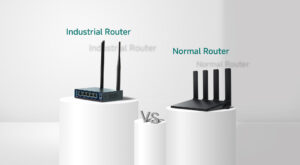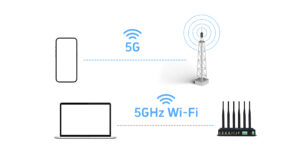Agriculture is undergoing a technological revolution, and IoT-based smart irrigation systems are at the forefront of this transformation. With water scarcity becoming a critical global issue, farmers and agribusinesses are turning to intelligent irrigation solutions that optimize water usage while maximizing crop yields. These systems leverage real-time data from soil sensors, weather forecasts, and plant health monitors to deliver precise amounts of water exactly when and where it’s needed. At the heart of these systems lies a critical component: industrial-grade communication devices like rugged M2M routers, which ensure reliable data transmission even in remote farm locations.
The Growing Need for Smart Irrigation
Traditional irrigation methods often lead to significant water waste due to overwatering, inefficient scheduling, or lack of real-time monitoring. Studies show that nearly 50% of agricultural water use is wasted because of outdated practices. IoT-based irrigation solves this problem by automating the entire process.
For example, a vineyard in California implemented an IoT irrigation system with soil moisture sensors and cloud-based analytics. By integrating a 4G-enabled industrial router for seamless data transmission, they reduced water consumption by 35% while improving grape quality.
Key Components of an IoT Smart Irrigation System
A fully functional IoT irrigation setup consists of several interconnected elements:
- Sensors – Soil moisture sensors, humidity detectors, and temperature gauges collect real-time field data.
- Controllers & Gateways – These devices process sensor data and send commands to irrigation valves.
- Connectivity Solutions – A reliable router for ourdoor use ensures uninterrupted data flow between field devices and cloud platforms.
- Cloud Analytics – AI-driven software analyzes data to optimize watering schedules and detect anomalies.
- Mobile/Web Dashboards – Farmers can monitor and control irrigation remotely via smartphones or computers.
Without a stable and secure communication backbone, even the most advanced sensors become ineffective. That’s why farms increasingly rely on cellular-enabled M2M routers with features like dual-SIM failover, VPN support, and weatherproof enclosures.
Top Benefits of IoT-Powered Irrigation
- Dramatic Water Savings
- By delivering water only when necessary, farms can cut usage by 30–50%, conserving a precious resource while lowering utility bills.
- Increased Crop Yields
- Proper hydration prevents under- or overwatering, leading to healthier plants and higher productivity.
- Remote Monitoring & Control
- Farmers no longer need to manually check fields. With a cloud-connected router, irrigation adjustments can be made from anywhere.
- Predictive Maintenance
- IoT systems detect leaks, pump failures, or clogged sprinklers before they cause major disruptions.
- Regulatory Compliance
- Many regions now enforce water restrictions. Smart irrigation helps farms stay compliant with environmental regulations.
Choosing the Right Industrial Router for IoT Irrigation
Not all routers are suited for agricultural IoT deployments. Key features to look for include:
- 4G/5G Cellular Connectivity – Ensures stable internet access in rural areas where Wi-Fi is unreliable.
- Dual-SIM Support – Automatically switches carriers if one network fails.
- Modbus & MQTT Protocol Compatibility – Allows seamless integration with existing farm equipment.
- Rugged Design – Dustproof, waterproof , and capable of operating in extreme temperatures.
Conclusion
IoT-based smart irrigation is no longer a luxury—it’s a necessity for sustainable farming. By combining precision sensors, cloud analytics, and industrial communication devices, farmers can drastically reduce waste, boost yields, and future-proof their operations.


